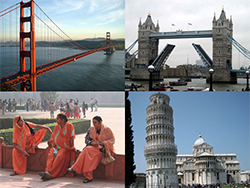The first in our series of posts on the growth of the global art market asks and answers questions on the explosion of demand for the art of living artists.

Q: Why are art sales for living artists increasing around the planet and what does that mean for artists and collectors?
A: While records are still being set for the sale of the works by deceased artists, such as Descent Into Limbo by Andrea Mantegna, which recently sold at Sotheby’s for $28.5 million, the shrinking supply of works—from Old Masters to Impressionists to Modern—means that the art market has necessarily shifted to an emphasis on the works of living artists. By definition, the supply of works by living artists is nearly limitless. (Read more about Descent Into Limbo in this 2002 New York Times article.)
As for demand, the good news is that the demand for visual art is increasing dramatically around the world due to globalization and the internet. Millions of people around the world now have access to the art and culture of other countries. Art sales are no longer limited to the few who frequent galleries and auction houses. For the first time in history, artists can individually or through their representatives market their works in every corner of the world.

As Sarah Thornton explains in her book, Seven Days in the Art World, such globalization means that “art crosses borders” and becomes a “lingua franca,” a common language that is not anchored to words¹, again indicating that the potential audience or demand for art is staggering! Moreover, as people around the world become more educated and technologically saavy, Thornton observes that we develop “appetites for more culturally complex goods” such as art, which can be thought-provoking and intellectually stimulating. We also rely more and more on iPhones, computers, video and television, which all employ visual imagery that leads us to read less and rely more on what we see, emphasizing our “visual literacy,” another contributing factor to increased demand for the visual arts.
It is fair to say that the future is promising for living artists and the collectors of their work.
Demand for art has also increased due to the growing wealth in emerging economies, a rise in the global population of the ultra-wealthy, and the building of new museums worldwide (something we will explore in an upcoming post). In short, due to increasing supply and demand for the visual arts, it is fair to say that the future is promising for living artists and the collectors of their work.
At Windows to the Divine, we seek to educate collectors and the public about the importance of understanding and supporting the art of the living artist through programs and conversation on a wide range of issues—from the philosophical to the financial—including the global art market.
¹Thornton, Sarah (2008), Seven Days in the Art World (ISBN-978-0-393-33712-9-pbk), NY, NY: W.W. Norton & Company, Inc.
Shannon Robinson is the curator and chairperson of the national exhibition Windows to the Divine and the national plein air event Altitude and Attitude. More about Shannon…






